Common Reasons Your Chainsaw Is Smoking
- January 2, 2024
- 0 comment
Chainsaws, the quintessential tools for cutting wood, are known for their robustness and efficiency. However, encountering smoke emanating from your chainsaw can be alarming. It’s crucial to understand the reasons behind this issue to prevent further complications. In this article, we delve into the common causes of smoking chainsaws and provide solutions to tackle them. Stay tuned till the end for an unexpected bonus reason!
5 Common Reasons Your Chainsaw Is Smoking:
1. High Idle Speed: A Common Culprit
When your chainsaw begins to emit smoke while idling, it’s often a telltale sign of an excessively high idle speed. This seemingly minor issue can have major implications: the engine operates at a speed higher than what is necessary, leading to a domino effect of heightened fuel consumption and, consequently, an increase in smoke production. This is not just a nuisance but a warning sign that the chainsaw is not functioning at its optimal efficiency.

To rectify this, a simple yet effective solution is at hand. Adjusting the idle speed of your chainsaw is crucial. The aim here is to fine-tune the speed to match the manufacturer’s recommended settings, which typically fall within the range of 2500 to 3000 RPM. This adjustment doesn’t just quell the unwanted smoke; it also aligns your chainsaw’s functioning with the intended design, ensuring longevity and optimal performance.
2. The Fuel Mixture: Getting the Balance Right
Venturing deeper into the heart of chainsaw maintenance, an improper fuel mixture emerges as another prevalent cause of smoking issues. The culprit often lies in an oil-heavy mixture. While oil is essential for the lubrication and smooth running of the chainsaw, an excess of it in the fuel can tip the balance, leading to smoky repercussions.

Addressing this is less about repair and more about precision and prevention. The key is to adhere to the ideal fuel-to-oil ratio, which for the majority of chainsaws, is a 50:1 mix. This precise balance ensures that the engine receives the right amount of lubrication without the side effects of excessive smoke. An often-overlooked but crucial practice is to thoroughly shake your fuel mixture before each use. This step ensures that the oil and fuel are evenly blended, offering a consistent performance throughout your chainsaw’s operation.
By tackling these two common issues, you not only enhance the performance of your chainsaw but also contribute to its longevity. Regular maintenance informed adjustments, and a keen eye for detail can transform your chainsaw experience, making it safer, more efficient, and smoke-free.
3. Air Filter Maintenance: A Key Factor
The air filter of a chainsaw is akin to the lungs in a human body. When it becomes clogged, the entire system struggles to function efficiently. This blockage restricts the engine’s airflow, causing an imbalance in the air-fuel mixture – commonly referred to as running ‘rich’. This imbalance is a primary cause of excessive smoke production, as the engine burns more fuel than necessary.

Regular maintenance of the air filter cannot be overstated. It’s a straightforward yet crucial practice that ensures your chainsaw remains at peak performance. Regularly cleaning and, when necessary, replacing the air filter can have a transformative effect. It’s not just about preventing smoke; it’s also about preserving the engine’s health and ensuring optimal fuel efficiency. Hyper’s extensive range of air filters and accessories offers a convenient solution, making this maintenance task less of a chore and more of a simple step in your chainsaw care routine.
4. Spark Arrestor: A Small Part with Big Impact
Tucked away in the chainsaw’s muffler, the spark arrestor may seem insignificant due to its size, but its role is monumental. This small screen plays a vital part in controlling the chainsaw’s emissions. Over time, carbon deposits can accumulate on the spark arrestor, leading to blockages that result in excessive smoking. This is not just a performance issue but also a safety concern, as it hampers the chainsaw’s ability to prevent sparks from escaping.

The solution is as straightforward as it is effective: regular cleaning. Using a wire brush to remove the carbon buildup from the spark arrestor can drastically improve the chainsaw’s performance. It’s a simple maintenance task that reaps significant benefits, ensuring your chainsaw operates safely, efficiently, and smoke-free. Regular attention to the spark arrestor is an often overlooked aspect of chainsaw maintenance that can significantly extend the life and efficiency of your tool.
5. Chainsaw Bar Oil: The Lifeline for Your Chainsaw’s Smooth Performance
Chainsaw bar oil plays an indispensable role in the seamless operation of your chainsaw. It’s the lubricant that keeps the chain moving smoothly over the bar. Without adequate bar oil, the friction between the chain and the bar increases significantly. This not only leads to inefficient cutting but also causes overheating, which is a common precursor to smoking around the chain or bar area.

The key to preventing this issue lies in ensuring proper lubrication at all times. Regular checks of the oil ports and the oil pump’s functionality are essential steps in this process. A practical way to test if the oil pump is distributing oil correctly is to run the chainsaw with the bar removed for a short period. This allows you to observe whether the oil is being dispensed efficiently, indicating that the lubrication system is functioning as it should. Keeping the oil reservoir filled and routinely checking the flow can save you from the problems of overheating and smoking, ensuring a longer life for your chainsaw.
Bonus Insight: Understanding When Smoking is Normal
It’s important to recognize that not all smoking from a chainsaw signals a problem. Certain conditions naturally lead to the production of smoke. For example, when starting a cold chainsaw, it’s common to observe a small amount of smoke as the engine warms up. This is typically short-lived and should not be a cause for concern.

Additionally, when cutting through wet or green wood, the moisture content in the wood can lead to the production of smoke. This is a normal reaction to the high moisture levels being exposed to the heat and friction of cutting.
However, it’s crucial to differentiate between these normal occurrences and excessive smoking. If the amount of smoke is significant and persistent, it indicates a problem that requires immediate attention. Whether it’s an issue with the fuel mixture, the air filter, the spark arrestor, or the chainsaw bar oil, excessive smoking is a red flag that should prompt a thorough inspection and appropriate action to ensure the safe and efficient operation of your chainsaw.
Recap: Key Steps to Maintain Your Chainsaw’s Health
Maintaining a chainsaw in top-notch condition requires attention to various components, each playing a crucial role in its overall performance. Let’s quickly recap the essential steps to prevent your chainsaw from smoking and ensure its efficient operation:
- Idle Speed Check: Regularly monitor and adjust the idle speed to the manufacturer’s recommended range, usually between 2500 to 3000 RPM.
- Fuel Mixture Balance: Ensure the correct fuel-to-oil ratio, typically a 50:1 mix for most chainsaws, and always shake the mixture before use for an even blend.
- Air Filter Maintenance: Clean and replace the air filter as needed to prevent clogging, which can cause the engine to run rich and smoke.
- Spark Arrestor Cleaning: Regularly clean the spark arrestor with a wire brush to remove carbon deposits and prevent excessive smoking.
- Bar Oil Level: Maintain an adequate level of bar oil for proper lubrication, check oil ports and the oil pump’s functionality, and perform a test run without the bar to ensure effective oil dispensation.
Further Steps and Professional Consultation
If, after performing these maintenance tasks, your chainsaw continues to exhibit issues like excessive smoking, it may be indicative of a more complex mechanical problem. In such cases, it’s wise to seek the expertise of a professional. A skilled technician can diagnose and resolve underlying issues that aren’t immediately apparent to the average user.
Conclusion: The Reward of Diligent Maintenance
By understanding the causes of a smoking chainsaw and proactively addressing them, you extend the life of your tool, enhance safety, and improve your overall woodworking experience. Regular maintenance not only keeps your chainsaw running smoothly but also instills a sense of confidence and reliability in your equipment.
So, remember these tips, stay vigilant about your chainsaw’s maintenance, and enjoy a safer, more efficient, and smoke-free sawing experience. Happy sawing!
FAQs
- Can a chainsaw smoke due to altitude changes?
Yes, altitude can affect your chainsaw’s performance. Higher altitudes mean thinner air, which can alter the air-to-fuel ratio, potentially causing the engine to run richer and produce more smoke. Adjusting the carburetor settings can help mitigate this. - How often should I replace the spark arrestor to prevent smoking?
The spark arrestor doesn’t necessarily need frequent replacement, but regular cleaning is vital. Inspect and clean it every few months, or more often if you use your chainsaw heavily. Replace it if you notice any damage or excessive wear. - Is it normal for my electric chainsaw to produce smoke?
Electric chainsaws shouldn’t produce smoke. If you notice smoke from an electric chainsaw, it’s likely due to an electrical issue or overheating. Stop using it immediately and consult a professional. - Can using old fuel cause my chainsaw to smoke?
Absolutely. Old or stale fuel can degrade, leading to poor combustion and excessive smoking. Always use fresh fuel and follow the manufacturer’s recommendations for the fuel type and mixture. - What’s the strangest reason you’ve heard for a chainsaw smoking?
One unusual, but possible reason is an animal nest or debris accumulation inside the chainsaw, especially if stored improperly. This can cause blockages and overheating, leading to smoke. - How can I tell if my chainsaw is smoking due to overuse?
If you’re using your chainsaw extensively and it begins to smoke, first check for signs of overheating, like a hot smell or a discolored bar. Give your chainsaw a break to cool down and check if the smoke persists after a rest period. - Can environmental factors, like humidity, affect my chainsaw’s tendency to smoke?
High humidity can contribute to increased moisture in wood, making it harder to cut and potentially leading to more smoke when cutting. Adjust your cutting techniques and maintain your chainsaw to adapt to these conditions. - Is there a DIY test to check the efficiency of my chainsaw’s oil pump?
Yes, you can test the oil pump by removing the bar and chain, running the engine, and observing if oil is being ejected from the pump. However, exercise caution and follow safety procedures while performing this test. - Can the type of wood I’m cutting influence the amount of smoke produced?
Certainly. Hardwoods or woods with high sap content can cause more friction and heat, leading to increased smoke. Adjust your cutting technique and ensure your chainsaw is well-maintained to handle different types of wood. - Are there any “quick-fix” solutions if my chainsaw starts smoking while I’m in the middle of a job? A quick fix might include checking and adjusting the idle speed, ensuring there’s enough bar oil, and cleaning any visible debris from the air filter or muffler. However, these are temporary solutions, and a thorough check-up is recommended later.
Join the discussion below by sharing your experiences, tips, or reviews. Your contributions help others make informed decisions and navigate their chainsaw choices with confidence. Let’s build a community of shared knowledge for all wood-cutting enthusiasts!

David Murray
Forestry AuthorI'm David Murry, a forestry equipment specialist with a focus on chainsaw operation. With over 13 years of experience, I've honed my skills in operating and maintaining a wide range of machinery, from chainsaws to log splitters. My passion for the outdoors and commitment to sustainable forestry drive my work, which emphasizes safety, efficiency, and staying updated with industry advancements. Additionally, I'm dedicated to sharing my expertise and promoting environmental awareness within the forestry community.

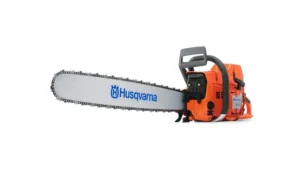
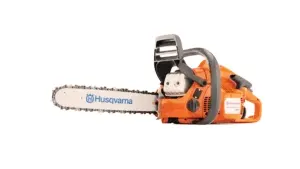
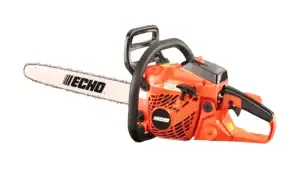

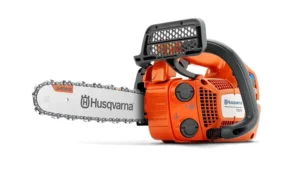
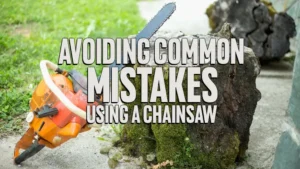
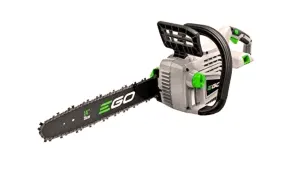
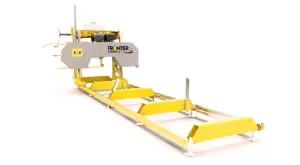
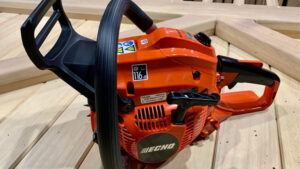
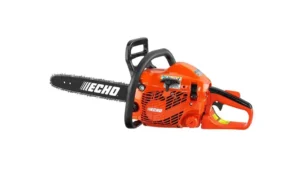
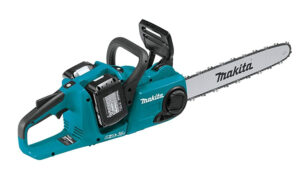

Leave your comment